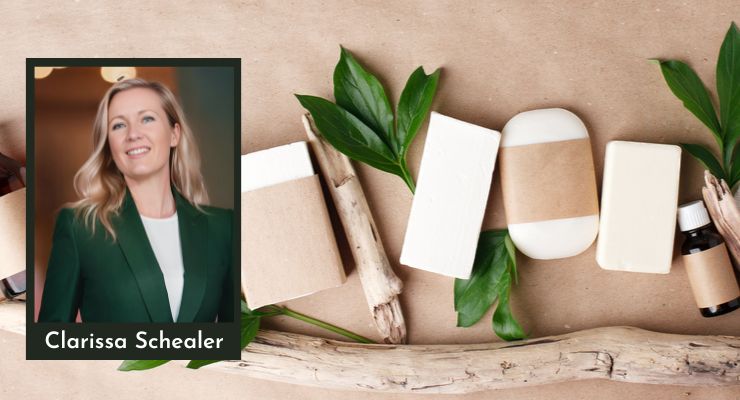Clarissa Schealer, ESW’s VP of Sales, Beauty, Wellness & Lifestyle Brands06.12.23
Beauty consumers worldwide are increasingly demanding more sustainable industry practices, including packaging. According to a recent ESW Global Voices survey of more than 16,000 consumers in 16 countries, sustainability is a key consideration for 87% of all consumers. That number dramatically increases to 94% for consumers who shop across international borders. The survey also found that 63% have paid more for a product that is sustainable.
Cosmetic packaging is arguably the first touchpoint consumers have with any beauty brand. Most of what they encounter is a lot of cellophane, cardboard, and plastic, which doesn’t necessarily make a strong first impression on young consumers.
Sixty-five percent of global shoppers have “gone out of their way” to buy products in environmentally friendly packaging, and 42% consider options for less packaging overall when making their purchase considerations.
Some global direct-to-consumer brands, like Tarte Cosmetics, have switched from plastic caps to sustainably sourced bamboo caps and APET plastic boxes that use post-consumer recycled (PCR) plastic. Beauty giant L’Oreal, for instance, has set a target of 50% PCR use by 2025.
Many brands have been reluctant to tout their advances in sustainability because they don’t want to appear to be greenwashing, or making false statements about their environmental credentials. And rightly so—62% of respondents say they are more aware of greenwashing practices today than they were a year ago.
e.l.f., which has been improving its packaging through the elimination of secondary packaging and inserts, openly touts its sustainability credentials on its website. Its “Project Unicorn” program has eliminated 1 million pounds of excessive waste since 2019 and the company is working to reduce its packaging footprint to “next to nothing.”
The opportunity for the packaging industry is not only to work together with brands to develop effective but eco-friendly packaging that can withstand international shipping and repeated use by consumers, but also to promote these advancements openly and honestly with consumers. The industry long ago realized that transparent packaging was a key sales driver, and now is the time for that transparency to extend to innovations in environmentally sustainable packaging.
About the Author
Clarissa Schealer is VP of Sales, Beauty, Wellness & Lifestyle Brands at ESW, a global direct-to-consumer (DTC) ecommerce company.
The First Touchpoint
Beauty, skincare and fragrance brands are actively working to meet the growing consumer expectation around an issue that can be tricky for the industry. While sustainability in the beauty industry can and does mean many things—sustainable ingredients, and ethical production, for example—one of the biggest ways to make a greater impact to protect the Earth can be with packaging.Cosmetic packaging is arguably the first touchpoint consumers have with any beauty brand. Most of what they encounter is a lot of cellophane, cardboard, and plastic, which doesn’t necessarily make a strong first impression on young consumers.
Sixty-five percent of global shoppers have “gone out of their way” to buy products in environmentally friendly packaging, and 42% consider options for less packaging overall when making their purchase considerations.
Take Incremental Steps to Reduce Packaging
Since packaging in the beauty world often serves a greater need to preserve the actual product inside, this data might seem overwhelming. But even incremental steps in reducing the environmental impact of packaging can go a long way.Some global direct-to-consumer brands, like Tarte Cosmetics, have switched from plastic caps to sustainably sourced bamboo caps and APET plastic boxes that use post-consumer recycled (PCR) plastic. Beauty giant L’Oreal, for instance, has set a target of 50% PCR use by 2025.
Openly Promote Advances
Perhaps the most surprising data point to emerge from this survey is the fact that 91% of shoppers expect brands to be transparent about their environmental credentials, and 60% of Gen Z and Millennial consumers have stopped purchasing from brands that lack environmental credentials.Many brands have been reluctant to tout their advances in sustainability because they don’t want to appear to be greenwashing, or making false statements about their environmental credentials. And rightly so—62% of respondents say they are more aware of greenwashing practices today than they were a year ago.
e.l.f., which has been improving its packaging through the elimination of secondary packaging and inserts, openly touts its sustainability credentials on its website. Its “Project Unicorn” program has eliminated 1 million pounds of excessive waste since 2019 and the company is working to reduce its packaging footprint to “next to nothing.”
The opportunity for the packaging industry is not only to work together with brands to develop effective but eco-friendly packaging that can withstand international shipping and repeated use by consumers, but also to promote these advancements openly and honestly with consumers. The industry long ago realized that transparent packaging was a key sales driver, and now is the time for that transparency to extend to innovations in environmentally sustainable packaging.
About the Author
Clarissa Schealer is VP of Sales, Beauty, Wellness & Lifestyle Brands at ESW, a global direct-to-consumer (DTC) ecommerce company.




























